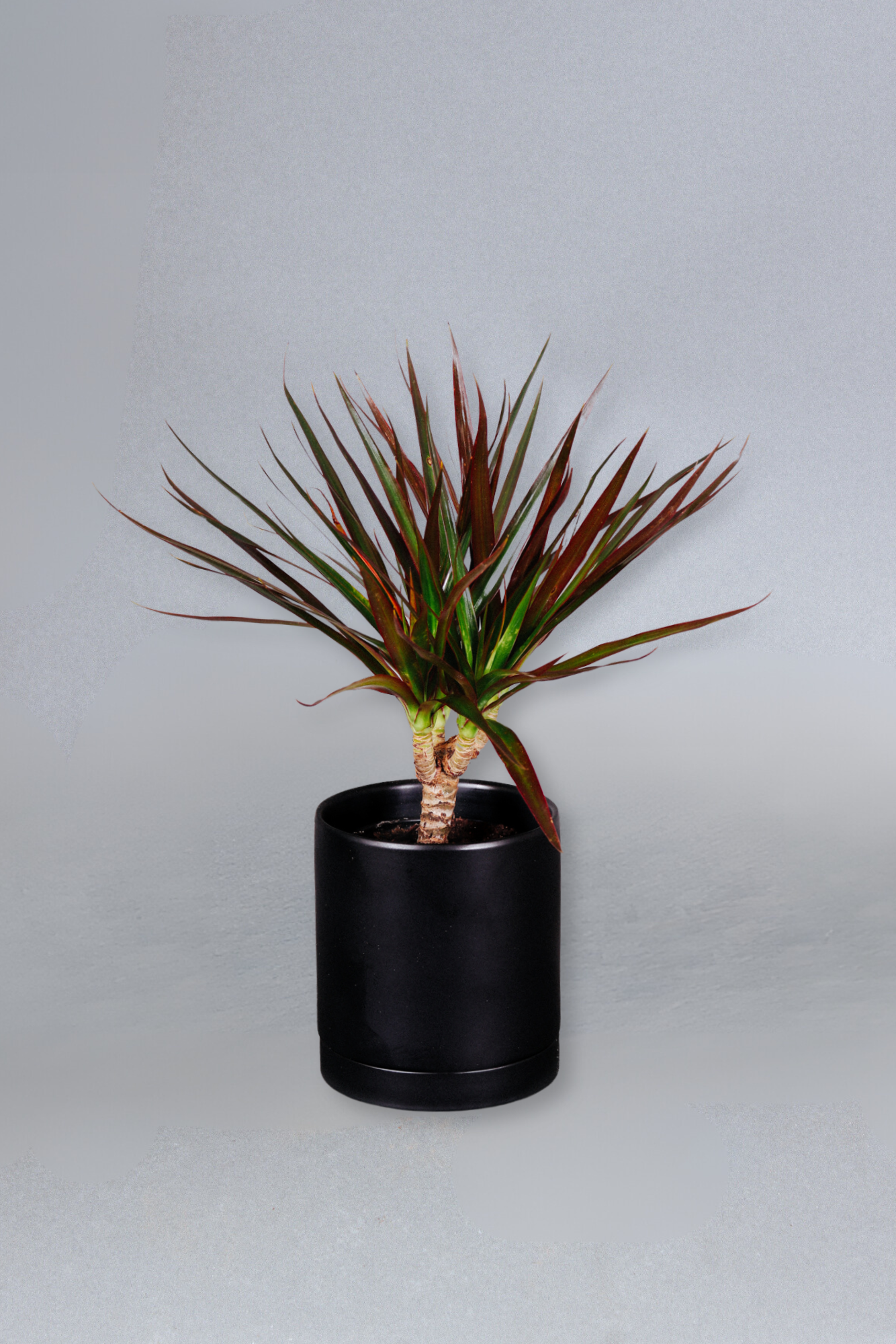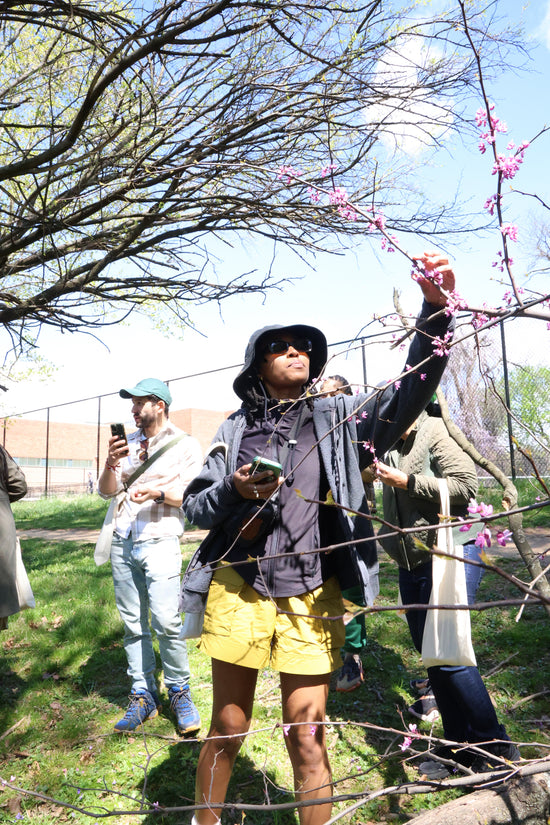Known for its expressive communication style, the Peace Lily asks only for simple care and your regular attention. Learn everything there is to know about growing this symbolic plant.
Maintenance: Intermediate | Climate: Warm + Humid | Light: Medium + Indirect | Watering: Consistent | Pet Safe: No
CHARACTERISTICS
The Peace Lily is a blooming houseplant originating from South American rainforests. Under great care, it grows huge leaves and up to 4 feet tall and wide. A healthy Peace Lily blooms tall, cream-colored flowers during the growing season that naturally brown off after a few weeks. These blooms only show up one to two times each year and are lovely symbols of hope and peace to keep close in your home.
LIGHT
Peace Lilies are adaptable to low and bright light as long as they’re not in the path of direct or intense sunlight. They do best in the interior of a room rather than next to a bright window. Light that is too intense will cause drooping or leaf burn, while light that is too dim will stunt growth.
WATER
These are tropical plants and require consistently moist soil. Water once the topsoil has dried 2 inches down, allowing the excess to flow from the drainage hole. Room temperature, non-tap water is best. Reduce the frequency during fall and winter when the plant’s growth has slowed.
AIR
Most homes provide a suitable environment for Peace Lilies. Keep in mind that they are native to the tropics and appreciate a humid, warm environment. Provide stable temperatures between 70º-85º and keep it away from drafts and vents. Add a boost of humidity by:
- Misting the leaves 3-5x per week with non-tap water
- Adding a humidifier nearby
- Creating a pebble tray that lives underneath the pot
- Placement in a bathroom or kitchen, if lighting is suitable
A sudden change in temperature or environment will cause your Peace Lily to wilt. It should also be kept away from vents and drafts.
PLACEMENT
These plants are symbols of hope, prosperity, and of course, peace. Their serene essence and air-purifying qualities make them excellent air purifiers, actively removing indoor toxins from your home. The spiritual, mental, and physical benefits make it for the bedroom and any area where you decompress or meditate.
Tip: Keep leaves dust-free so they can cleanse the air and produce oxygen!
POTTING & SOIL
We recommend a ceramic planter with a drainage hole to provide ideal moisture balance for your Peace Lily. Pots with a drainage hole ensure the plant is well-hydrated without being waterlogged and allows harsh minerals to flush out.
Pot your Peace Lily in a high-quality potting mix and consider adding beneficial amendments such as coco coir, orchid park, or perlite. Transplant your Peace Lily during the growing season, moving up two inches in pot size, if desired. After 1-2 annual repottings, it can go 2-3 years without needing a new home.
SEASONAL CARE
To keep your plant healthy year-round, keep it away from heat and A/C vents. We recommend checking the soil moisture using your finger since it will gradually dry slower as fall and winter roll in. These months send the plant into rest, requiring less frequent watering, no fertilizer, and as little change as possible.
When the growing season returns at the start of spring, you can check off other care tasks for your Peace Lily, including repotting, fertilizing, and increased watering.
PRUNING & PROPAGATION
Peace Lilies can only be propagated by division. To split your plant into two smaller plants, remove it from its pot and find a natural path of separation between the stems. Gently loosen the dirt ball and carefully separate the plant groupings at the roots. Transplant each division into its own pot. This process is best done during spring and summer when the plant has the most energy to recover.
Pruning dead, old, or damaged leaves and flowers throughout the year will keep your plant healthy. Always use clean and sharp shears or scissors to remove the entire stem when trimming your plant.
Tip: To help your divided Peace Lilies adjust with ease, mix some of its current soil with the new potting mix.
COMMON ISSUES
These plants can be a bit dramatic when care is skipped or the environment changes. Drooping leaves are the most common stress response, but they’ll perk upright quickly once tended to. This list of common issues will help to pinpoint the cause for any changes your Peace Lily is going through.
DROOPING, WILTED LEAVES
Peace Lily leaves commonly droop when they’re underwatered, experiencing temperature stress, or improper lighting. Start by checking the soil moisture with your finger. If the top two inches are dry, your plant is thirsty. If the soil is wet, it may instead be overwatered or developing root rot.
Additionally, ensure your Peace Lily has stable temperatures and is away from drafts. If its leaves are wilting despite proper care, check if it’s root bound or struggling with a pest infestation.
BROWN LEAVES OR BROWN TIPS ON LEAVES
Underwatering and dry air are notorious causes of brown leaves on a Peace Lily plant. Direct or intense light can also cause leaf burn with brown tips. Ensure the soil is consistently watered once the top 2” have dried, and provide it with extra humidity.
MY PEACE LILY ISN’T BLOOMING FLOWERS
Peace Lilies bloom flowers when they have the most energy during the spring and summer. A healthy plant will typically bloom a few flowers at least once yearly (or twice if it’s thriving in your home)! If your plant has all its needs met but hasn’t bloomed, it may need brighter light, fertilizer, or to recover from stress.
WHY ARE MY PEACE LILY FLOWERS BROWN?
Blooms naturally die off after a few weeks, slowly turning brown as the flower gets soft and wilts. You can prune these dying flowers away by trimming them with clean, sharp shears or scissors.
YELLOW LEAVES
Yellowing leaves on a Peace Lily may be from overwatering, underwatering, or a nutrient deficiency. Start by checking the soil moisture levels with your finger. Water only after the soil has dried 2 inches.
GREEN PEACE LILY FLOWERS
Green flowers are a sign that your Peace Lily has a nutrient imbalance. Be sure you are properly diluting fertilizer and consider fertilizing less often (about monthly during the growing season).
Congrats, you’re a Peace Lily expert. Enjoy this beautiful symbol of hope and solace in your home. If you have any questions, we're here to help!








